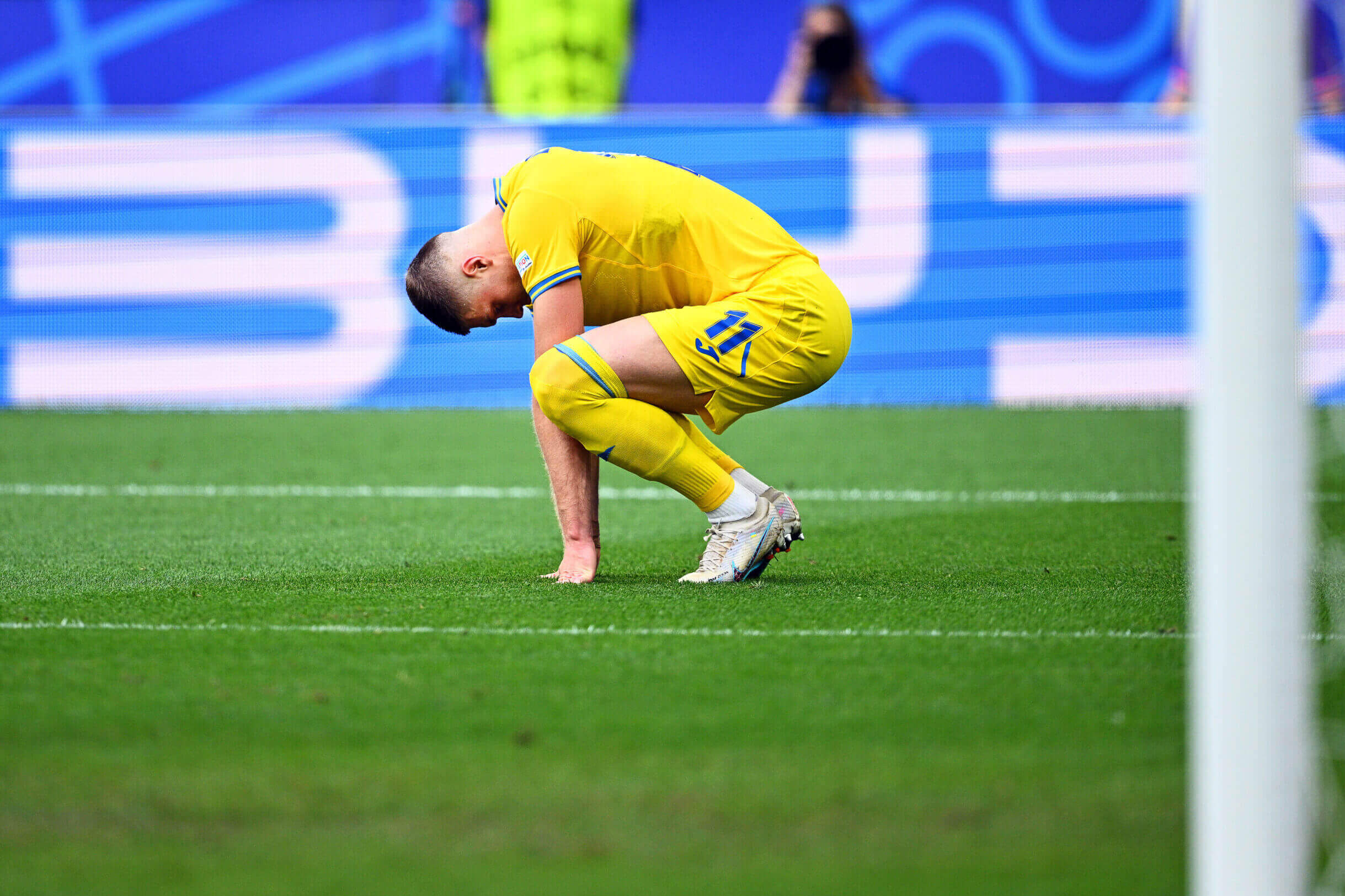Belgium and Ukraine scrapped to a 0-0 draw that saw the former sneak through to the knockout stages of Euro 2024 and the latter eliminated.
The Belgians were a long way off their best and their inability to win the game means they will now play France in the last 16, having finished second in the group behind Romania.
The Athletic’s Jordan Campbell, Dominic Fifield and Liam Tharme address the key points from the match…
Belgium stumble into daunting France showdown
From arguably the most favourable group in the tournament, Belgium contrived to finish second and draw tournament favourites France — their behemoth neighbours who crushed their World Cup dreams in 2018.
If only Belgium could steady themselves in and around the box, they would have avoided such a fate, but this match was a reminder that individual talents do not add up to winning teams.
Belgium only mustered one clear chance in the first half when Kevin De Bruyne (who else?) played a perfectly weighted pass to split the defence, but Romelu Lukaku (who else?) scuffed his shot.
The Belgian striker has 85 international goals, but he often has the appearance of a man cursed in front of goal. That theme continued, but the general lack of composure let Ukraine into the game.
The lack of understanding down both wings and between Jeremy Doku and Lukaku was painfully apparent. De Bruyne is doing his best to carry the team as its one remaining superstar, but Lukaku must find his mojo and Domenico Tedesco must find a better chemistry or this stressful episode will surely precede a swift exit.
Jordan Campbell
This tournament will miss Ukraine
That Ukraine were competing at this tournament at all is remarkable. Since the Russian invasion in February 2022, their domestic league has been wrecked, with their squad dispersed around Europe. In that context, to have qualified and acquitted themselves as well as they have, making life as awkward as they did here for Belgium, was a staggering achievement.
The shadow under which they live remains inescapable. It was evident in the defiance of their supporters, flooding the stands in yellow and blue. “Peace has a price,” read the banner they unfurled during the first half and depicting Nazariy ‘Hrinka’ Hryntsevych, who was killed in the conflict earlier this year. The image included 182 photos of fallen Ukrainian soldiers, all supporters of clubs in their homeland in civilian life.
It was evident, too, in the reaction of the Belgian fans who, having bellowed their own national anthem to the heavens, applauded throughout the rendition of that of their opponents.
But it was clear, too, in their performance.
After that loss to Romania in Munich, Serhiy Rebrov’s players have impressed. The victory in Dusseldorf over Slovakia was achieved on a wave of emotion. Here, they worked feverishly to nullify much-fancied opposition, summed up by the blocks they conjured to deny Yannick Carrasco and Jeremy Doku as time ticked away. They posed a threat on the counter, too, but were thwarted by a lack of cutting-edge. Roman Yaremchuk chose to cross when presented with their clearest first-half opportunity. Their forays up-field tended to peter out at the critical moment. When Belgium did open up obligingly in stoppage time at the end, Georgiy Sudakov shot straight at Casteels.
By the end, they looked exhausted. Drained. Their fans saluted them at the end as the players lined up to thank them. They are out, but the finals will be worse off for their absence.
Dom Fifield
Pressing issues will haunt Belgium
Belgium’s pressing had been good in their first two games. They pushed their 4-3-3 into a 3-4-1-2, going man-for-man against Slovakia and Romania’s 4-1-4-1 attacking shapes. It locked their opponents out wide, forced them long and led to regains close to goal when opponents played into the trap.
Belgium made 16 final-third regains in their opening two matches in both games, allowing opponents fewer than 10 passes before a defensive action (PPDA) — one of the most intense presses at the tournament.
Improving their out-of-possession approach had been at the heart of Domenico Tedesco’s agenda. He wanted to evolve the ageing 2022 World Cup side who struggled to press (six final-third regains in three games).
Maybe it inspired Rebrov’s system switch, from 4-3-3 to 3-5-2, or maybe Rebrov was playing for a point. Regardless, Ukraine’s wing-back system was an issue for Belgium because it pinned their full-backs, who like to make aggressive jumps in the press. Ukraine had two out balls, to either No 9, and went short from the goalkeeper but used their midfielders cleverly between the lines — often they would make lateral runs to open passing lanes.
There were numerous occasions where a Ukrainian defender split the midfield with a vertical pass and Belgium had to scramble to defend and regain shape. While there is a benefit of Belgium mid-block defending given their counter-attacking quality, they consistently lacked control without the ball and were too porous. This was Belgium’s least intense defensive display (in terms of PPDA) at any of the past four major tournaments.
Liam Tharme
What next for Ukraine?
Saturday, September 7: Albania (H*), Nations League. 7.45pm BST, 2.45pm ET
This game will be played in Prague, Czech Republic, due to the ongoing war in Ukraine.
What next for Belgium?
Monday, July 1: France (last 16; Dusseldorf), 5pm BST, noon ET
Recommended reading
(Top photo: Tom Weller/Getty Images)

